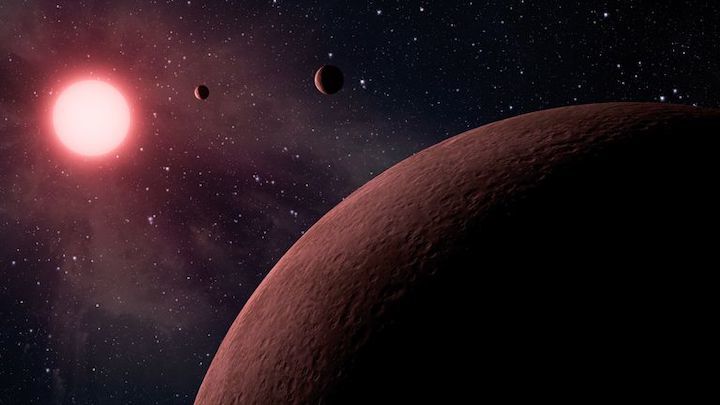14.07.2019

In less than 30 years, humanity has discovered more than 4,000 exoplanets, and to celebrate the milestone, NASA created a map that puts that number into a more visual perspective
The video assigns a sound and color to the method used to detect each planet, whether radial velocity, transit method, imaging, or microlensing. Watching these previously unknown celestial bodies blink into our observed existence makes for a deeply moving video about space exploration and discovery.
But how have we discovered so many exoplanets so quickly? Well, we can thank the now-retired Kepler Telescope for a lot of the rapid growth. The number of planets found increased substantially once Kepler began helping in the search for exoplanets. New tech like the Kepler Telescope uses radial velocity which measures the movements and the color signature of a star.
Spectrographs are used to track the changes in color of the star and to see if it moves in a cyclical pattern (i.e.: days, weeks, or years) towards or away from Earth which indicate that a body is circling the star causing the star's patterned movement. The body is considered a planet if it has a dense, low mass.
Another method of discovering exoplanets is transit photometry. This measures the dimness of a star across regular intervals by observing how dim the star is as a planet in orbit passing between it and Earth. If the star dims in fixed or regular periods, then the chances that an exoplanet is in orbit are high.
Now that Kepler is retired, NASA's Hubble successor, the James Webb Telescope, will take over some of Kepler's responsibilities. The James Webb Telescope is set to reach orbit in 2021 where it will be able to find exoplanets and have the ability to discern whether the foreign planets would be able to sustain life.
Additionally, NASA's Transiting Exoplanet Survey Satellite (TESS) is also working to fill in Kepler's shoes by looking for new exoplanets. TESS has reportedly foundmore than 700 new exoplanets during just its first year in orbit.
Expect that 4,000 milestone to be eclipsed very soon.
Quelle: PM
